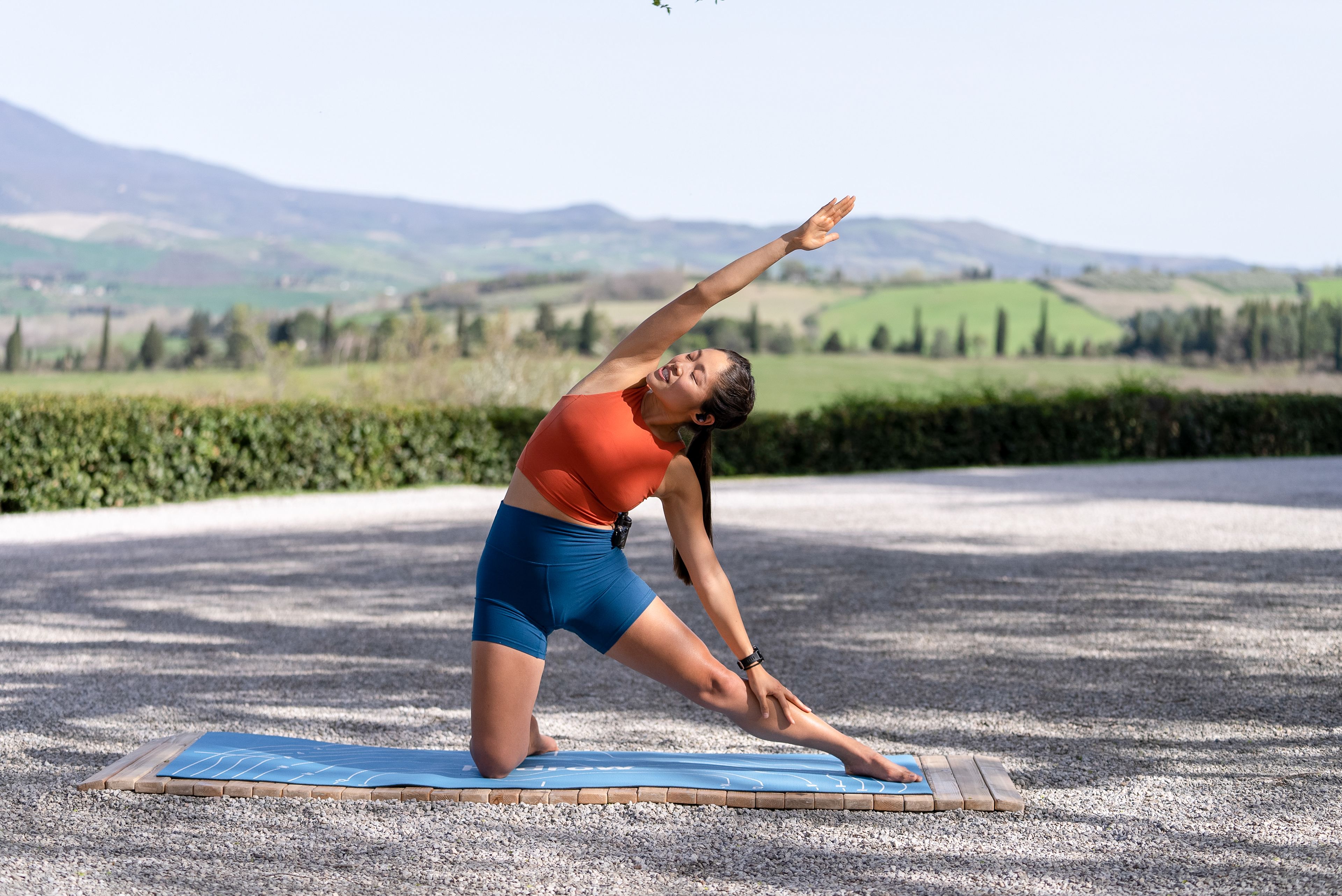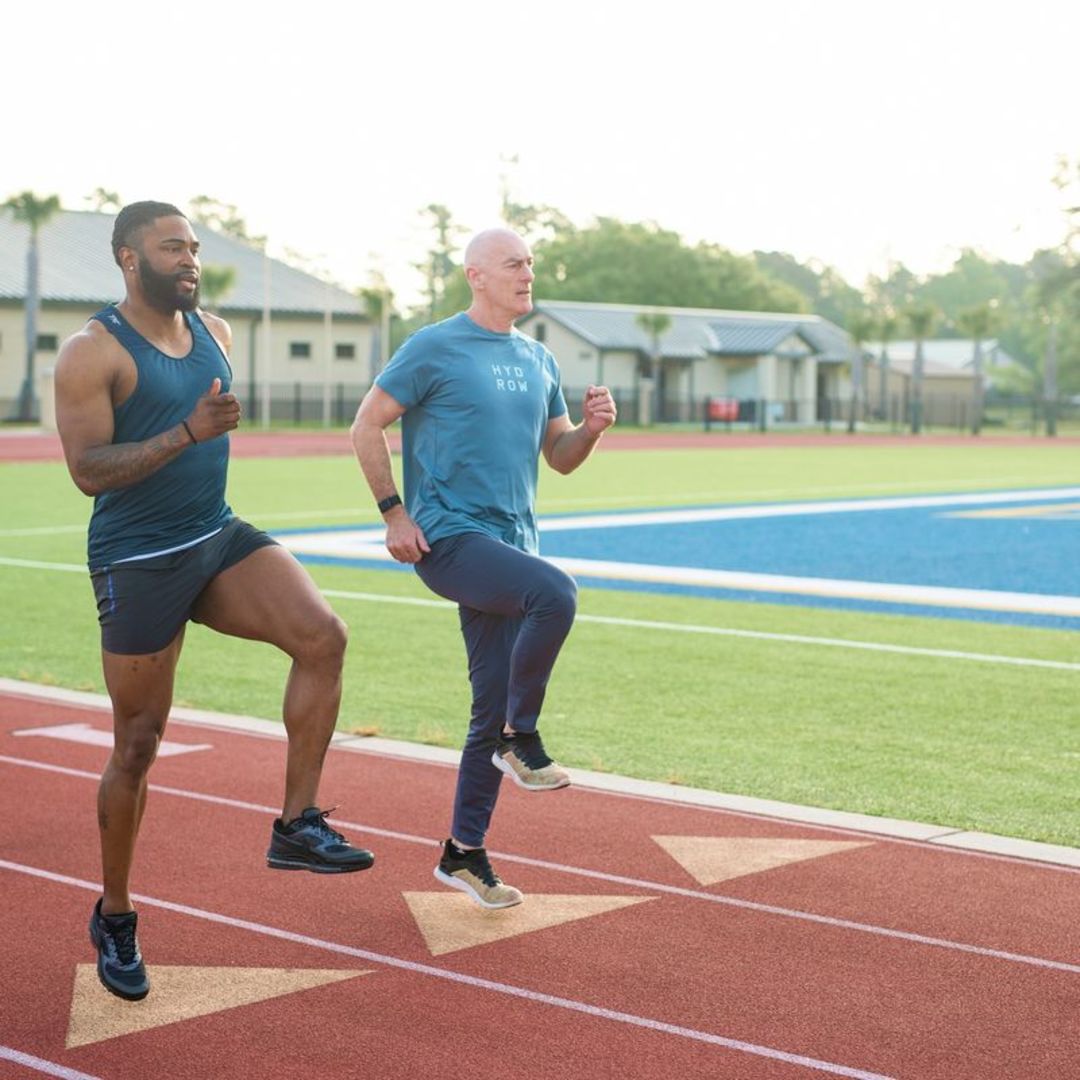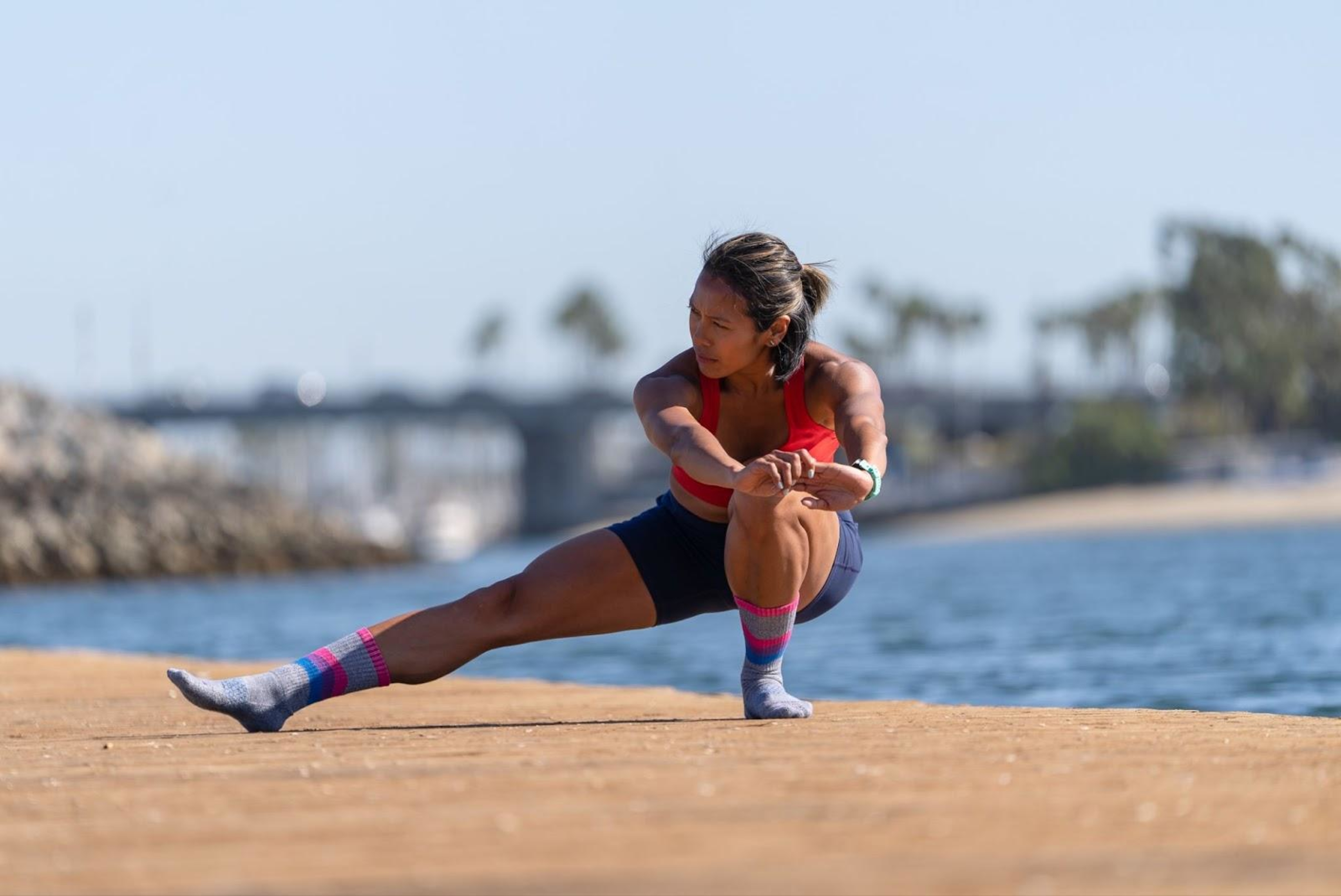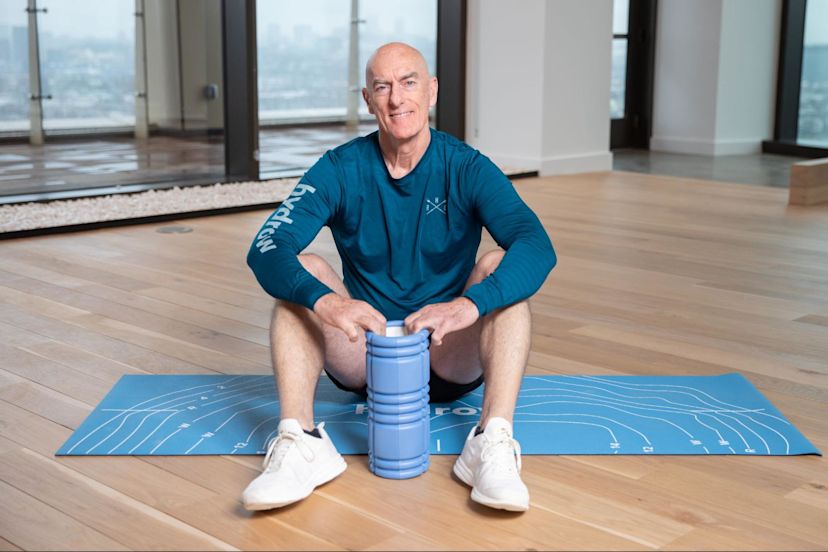How to Relieve Sore Muscles After a Workout: 14 Tips

So, you’ve tried a new activity, tried to increase the amount of weight you’re lifting, tried to run faster, or even just worked out for the first time in a while. You felt great in the moment, but hours later (up to 48 hours), your muscles started to feel sore, leaving you wondering how to relieve sore muscles after working out.
Post-workout muscle soreness, often called delayed onset of muscle soreness (DOMS), is not uncommon, even for elite athletes. It is your way of overloading your muscles with the idea that they repair themselves and become stronger.
While sore muscles can be a common side effect of working out, the aftermath isn’t always the most comfortable situation. But, fear not! There are several ways to relieve muscle soreness after exercising and get you ready for your next workout, including:
Let’s dig into each method to learn more about how to treat sore muscles:
1. Active recovery
Just because you’re sore doesn’t mean you have to remain perfectly still to recover. Active recovery involves participating in some light exercise, such as yoga, walking or leisurely jogging, cycling, or rowing.
This activity is completed at a lower intensity than your regular workouts and no more than 60% to 70% of your maximum effort. It will warm your muscles up, increase the blood flow to your muscles, and help repair any muscle fiber damage that may have occurred during more strenuous exercise.
The bonus of active recovery exercises is that they can also build some strength and aerobic fitness.
Related blog: Is It Okay to Exercise With Sore Muscles?
2. Passive recovery and rest
Incorporating a full rest day is encouraged if you are following a regular workout plan or are experiencing extreme DOMS. This passive method of recovery allows the fibers of your muscles to fully repair and recover.
It can also prevent possible injuries that could occur if your muscles were subsequently overloaded during another bout of exercise and/or if tired muscles caused you to exercise with improper technique.
3. Gentle stretching
There is a reason you naturally tend to stretch when you feel stiff — it feels good! Post-workout muscle soreness can result in shortened, tighter muscles.
Doing some purposeful gentle stretching will help to lengthen the muscle fibers, relax the blood vessels, and increase blood flow to the targeted muscles. This increased blood flow will also help to eliminate waste products to ease muscle soreness.
Also, the parasympathetic system can be activated during stretching, which induces a sense of relaxation and calmness.
4. Quality sleep
Never underestimate the power of sleep! Sleep is critical to help with your muscle recovery. While you are in a deep slumber, your pituitary gland secretes most of its human growth hormone, which is responsible for helping repair and grow new cells. It also releases a hormone called prolactin, which aids in naturally moderating inflammation.
It is recommended that adults get seven to eight hours of quality sleep a night, so be sure to prioritize catching some zzz’s as you plan out your fitness routine for the week.
5. Hydration
The average human body is composed mostly of water, so it’s no surprise that drinking water is important to your overall health. Drinking the right amount of water for your personal health and activity levels is vital and very impactful in recovering from exercise.
Water helps to maintain blood volume, which flushes out toxins, carries nutrients to the cells, and maintains body temperature and pH levels. This ultimately contributes to helping decrease muscle fatigue and tension.
6. Proper nutrition
There are several theories out there on the types of food you should and shouldn’t eat when you have sore muscles, making it tough to decipher the do’s and don’ts of what to eat.
Generally speaking, however, establishing a consistent, healthy, and proportional diet on a daily basis is best. This means avoiding sugary foods, excessive salt, and food with saturated fat or trans fat.
To positively fuel your muscles and help with recovery, try to incorporate the following natural foods into your diet:
Fruits
Whole grains
Fat-free or low-fat dairy products
Lean meats
Poultry
Fish
Beans
Eggs
Nuts
Related blog: Should You Eat Before Working Out?
7. Hydrotherapy
Hydrotherapy involves a wide range of water-related therapy, with multiple modalities falling under this umbrella that use the physical properties of water. Let’s explore a couple of these techniques:
Aquatherapy: Also referred to as physiotherapy in the water, aquatherapy involves completing exercises in warm water to aid in muscle and joint movement. While this type of therapy is predominantly practiced by those suffering from chronic musculoskeletal or neuromuscular conditions, the pool does add value for anyone working through muscle soreness. The buoyancy and resistance of warm water provides a sense of weightlessness that can aid in blood flow and circulation, encouraging muscle relaxation and less muscle pain sensitivity. All of this encourages moving through a full range of motion despite DOMS.
Contrast baths: This involves repeatedly alternating between cold-water and hot-water submersion for a set duration of time. The concept is that the capillaries of the circulatory system will open and close quickly, resulting in a pump-like action believed to help decrease inflammation and swelling of the muscles. Ultimately, this will help relieve sore muscles and allow for more range of movement.
8. Heat therapy
The use of a heating pad, hot tub, or hot bath are all forms of heat therapy. Heat increases the skin and muscle temperatures, improving blood circulation and removing muscle tissue toxins. As a result, the muscles become relaxed and more flexible.

What’s your fitness style?
Take our quiz and receive a customized 14-day training program.
9. Cold therapy
Contrastingly, cold therapy—such as ice baths or the application of ice packs to a particular area —lowers the skin and muscle temperatures, decreases the blood flow, and helps to block nerve impulses to the joints. This can help reduce the inflammation and swelling that are often the source of muscle soreness.
Note: Both heat and cold therapy can have a positive impact on relieving sore muscles. Choosing which one to use is based on your own individual preference.
10. Foam rolling
Foam rolling is a great option to relieve sore muscles, especially if you enjoy the therapeutic benefits of massage but don’t have the time for a massage appointment.
Foam rolling is a tool that utilizes a technique called self-myofascial release. The fascia is a type of connective tissue that has several layers within a muscle. This thin connective tissue wraps around single muscle fibers, bundles of muscle fibers, and the entire muscle to help hold them together and allow the muscles to glide through a full range of movement. Sometimes, the glide between the muscle fibers gets “sticky,” often referred to as a trigger point, and the connective tissue loses its elasticity and limits muscle movement.
Rolling on the foam roller applies pressure to your muscles and fascia that will aid in reducing the friction and subsequently allow the muscles to separate, relax, and become more flexible. Foam rolling is also believed to increase blood flow to the muscles, which speeds up DOMS recovery.
11. Massage
There are both physiological and psychological benefits to a massage, and several massage techniques can be applied to stretch and loosen muscles, increase blood flow, and break down inflexible tissue.
A massage will stimulate the lymphatic system to remove the waste products from the muscles. The increased blood flow will replace this waste product with oxygen and nutrients, which help to repair and build muscle, as well as decrease muscle fatigue and soreness. Applying pressure to the muscles will help to loosen up the tigger points and lengthen out your muscle, creating relief from the muscular tension.
Psychologically, muscle soreness can accompany a release of cortisol, a stress-induced hormone. All the physiological benefits of massage will also assist in reducing stress-like symptoms.
12. Epsom salt soak
While there is little scientific proof, natural mineral epsom salts have been used for years with claims that it soothes tired muscles and helps to decrease muscle soreness, inflammation and swelling.
With just one to two cups added into your warm bath water, the epsom salts break down into magnesium and sulfate, which gets absorbed into your body through your skin. From there, it is believed the magnesium will soothe exercise-induced muscle soreness.
13. Over-the-counter (OTC) pain relievers
There are both topical and oral types of OTC pain relievers that can be used to help relieve sore muscles. A non-steroidal anti-inflammatory drug (NSAID) such as ibuprofen is orally ingested to provide systemic pain and inflammation relief. A topical cream or gel that contains menthol or capsaicin can also be applied to your achy areas without as many potential side effects.
Do note that it’s not advised to regularly rely on pain relievers for sore muscles, as there could be some long term-side effects on the body.
If you are looking to go the natural route, ginger has been used for centuries to relieve pain and inflammation. This can be consumed in tea, ginger root or OTC supplements.
14. Essential oils
This natural remedy is extracted from plants and can be used on a regular basis or on the occasion you are experiencing sore muscles. Either add a few drops to your bath water or dilute it into a carrier oil such as olive oil and massage into your muscles.
Different essential oils have different claims associated with how they may reduce muscle soreness, such as anti-inflammatory, relaxation, calming, and pain-relieving properties. Some examples of essential oils to explore are lavender, chamomile, eucalyptus, peppermint, and thyme.
Relieving sore muscles after working out: The bottom line
Sore muscles are not necessarily a bad thing — they’re a sign that you're utilizing the muscles you have! But it’s important to listen to your body and find the right way to take care of yourself afterwards. Explore one or more of these options, see how your body responds, and find some relief from your post-exercise sore muscles.

Explore Hydrow's library of 5,000+ rowing, circuit training, yoga, Pilates, and mobility workouts.


















